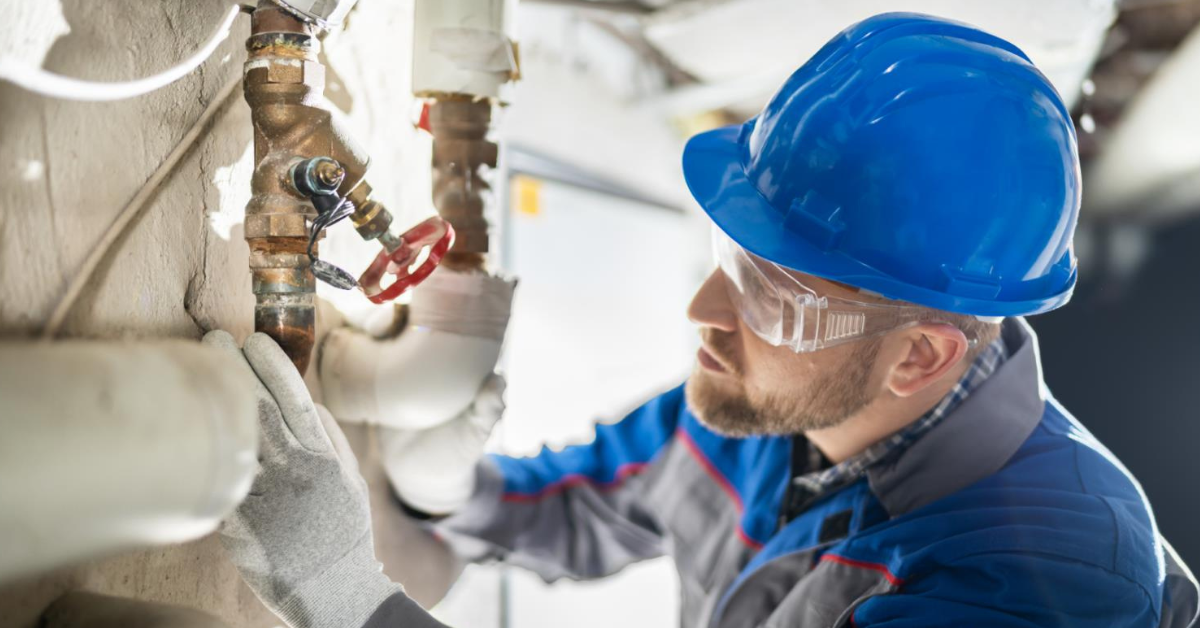30.01.2025
Table of technical inspections: necessary information to perform an inspection
Proper documentation is the basis for effective management of the technical inspection process. Its mandatory element is the inspection table, which allows for efficient planning, control and analysis of activities related to machine maintenance. This is an essential tool for those responsible for maintenance – its correct completion and regular updating ensures that the equipment operates in accordance with technical requirements and all procedures are followed. For this type of tasks, companies use CMMS systems , which are designed to improve their operational efficiency. Find out more in our article!
Table of Contents
The importance of the technical inspection table in maintenance
The technical inspection table is a tool that allows for systematic tracking of the technical condition of machines and devices . Thanks to it, people responsible for maintaining traffic in the plant have easy access to key information on inspection dates, activities performed and the technical condition of individual machines. Regular inspections prevent serious failures and extend the life of devices, and also allow for timely detection of potential faults – all this together minimizes the risk of production downtime. It is also worth noting that a correctly prepared inspection table can be easily integrated with production management systems or ERP systems, which allows, among other things, automatic generation of notifications about upcoming maintenance dates.

What information should be included in the technical inspection table?
In order for the inspection table to fulfill its function, it must contain all the important data that allows for efficient management of maintenance processes. The most important information includes machine identifiers, device descriptions and names, dates of last inspections, dates of planned inspections, scope of individual activities and recommendations for maintenance .
1. Machine inventory number
The inventory number is a unique identifier that should be assigned to each device in the production plant . It can be used to clearly locate the machine in the system, which makes it easier to control its service history and technical condition. It is also an element that can be used in reporting documentation and internal audits.
2. Machine name and short description
The inspection table should also include basic information about the machine itself, including its name, type, and a brief description of the functions it performs in the production process. This type of information allows those responsible for the inspection not only to quickly recognize the device, but also to access knowledge about specific maintenance requirements. The description may include, among other things, the type of parts used, the frequency of replacements, or specific safety procedures that should be used during the inspection .
The CMMS system includes a “Reports and Analysis” function, from which you can track all operations and technical inspections and prepare accurate forecasts.
3. Dates of last inspections
Each technical inspection should be properly documented – the basic information in this regard is, among other things, the date of performance. The table should therefore include the dates of all previous inspections, which allows tracking the history of the device and allows you to assess whether the inspections were performed at the appropriate intervals. This will allow for efficient identification of any delays that may affect the efficiency or safety of the machine.
4. Scheduled inspection dates
Equally important are the dates of subsequent inspections, scheduled according to the manufacturer’s recommendations or internal company procedures. These dates should be clearly defined so that maintenance personnel can schedule service work in a way that will cause the least disruption to production . It is important that the dates are set based on the actual needs of the equipment, such as the intensity of its use and the operating conditions.
5. Scope of inspection and replacement of parts
The key element of the table is the details regarding the scope of inspections and possible replacement of parts . For example, if the inspection only concerns checking the oil level and condition of filters, such information should be included in the table – as well as the need to replace consumable parts, such as belts, bearings or hydraulic system components. Access to such information allows for effective planning of specific activities to be performed.
The CMMS system includes checklists that support the complete technical review process.
6. Review results and recommendation
The table should also include a place to record the results of the inspection and any recommendations for repairs or replacement of parts . This allows you to track the technical condition of the machines and respond to potential problems early enough. If any faults are detected, the recommendations should include detailed instructions that will allow for quick repair actions.
7. Signatures of responsible persons
At the end of each item in the review table, there should be signatures of the people responsible for performing and approving the review . This allows for clear assignment of responsibility and control of the actions of individual departments or employees. Such information can be particularly useful during audits and external controls.

What are the benefits of maintaining a proper technical inspection table?
Proper preparation of the technical inspection table brings many benefits in the production plant. They are important both in the operational and company context. By taking care of this issue, you can count on, among others:
- increased efficiency – regular inspections, which are performed on the basis of reliably collected information, allow for faster detection of problems, which reduces production downtime;
- maintaining compliance with regulations – adhering to the inspection schedule allows, among other things, maintaining compliance with occupational health and safety standards and the requirements of machine manufacturers;
- cost optimization – early detection of faults can prevent serious, costly failures;
- Better resource planning – the overview table helps manage time and staff by allowing you to plan overviews in advance.
The technical inspection table is an indispensable tool in maintenance management. The information contained in it allows you to maintain full control over inspection dates, machine service history and details regarding maintenance activities performed . Ensuring that this document is properly maintained allows you to increase production efficiency, minimize the risk of failure and optimize repair costs. You cannot forget about regularly updating the table and adhering to the inspection schedule – this is the key to maintaining high reliability of machines and devices in the plant.
If you would like to test our solution, we invite you to create a free account and check the QRmaint CMMS system for free for 14 days. We encourage you to contact us and arrange a free consultation by phone: +48 12 400 41 70 or by e-mail at: kontakt@qrmaint.com

